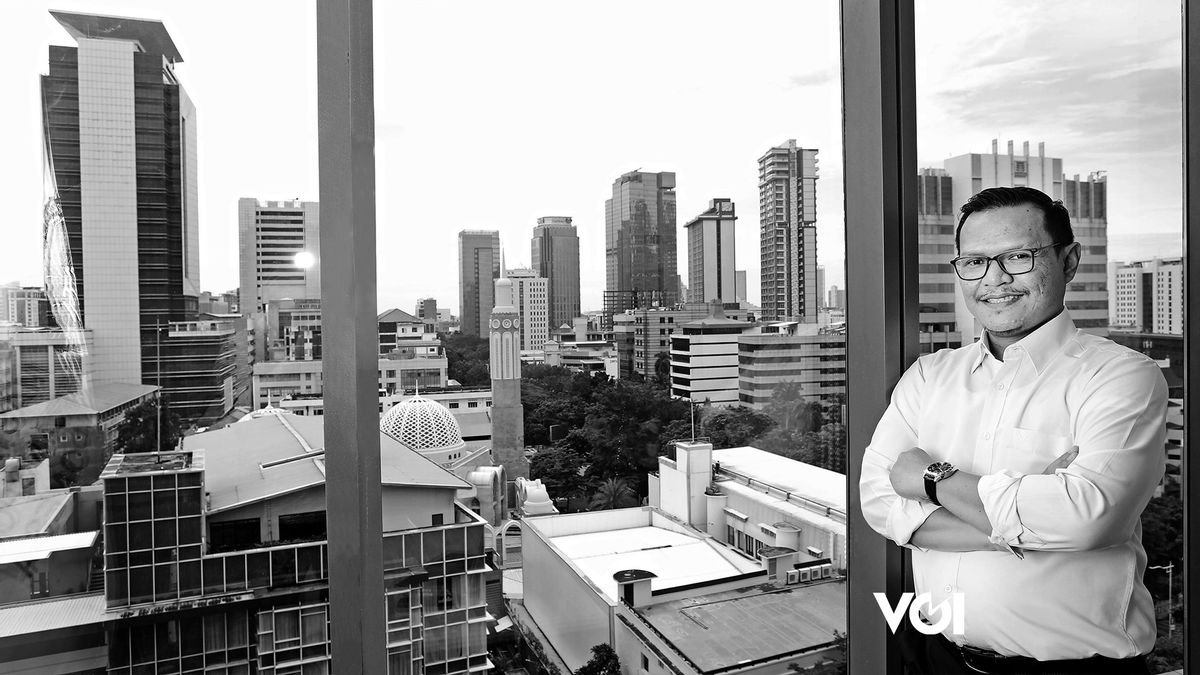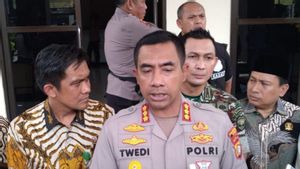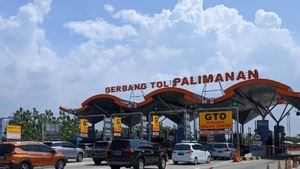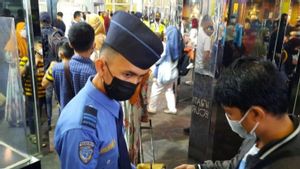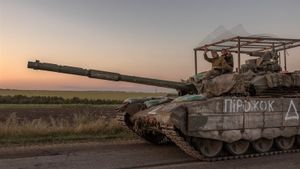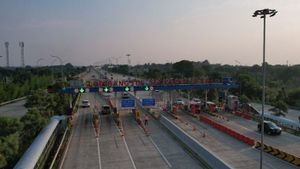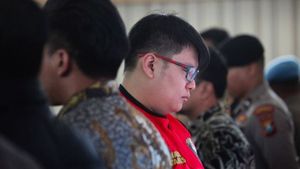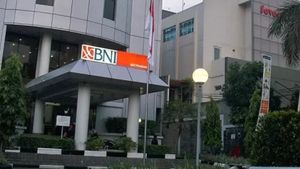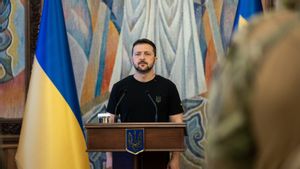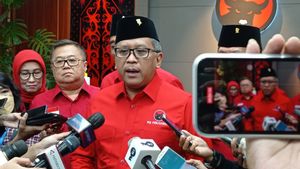According to the General Chairman of the Indonesian Transportation Society (MTI) Tory Damantoro, ST., MSc., MPPM., traffic jams that occur during Eid Homecoming flows, ST., MSc., MPPM., are normal things to happen. The problem is the traffic flow increases drastically at a constant capacity. Removing congestion at that time was a difficult thing to do. However, efforts to spread congestion so that it doesn't pile up on the same day can be pursued by implementing several strategies.
***
Every time ahead of Eid, the Muslim community will leave Jakarta in droves to return to their hometowns to celebrate Eid in various parts of the country. This tradition, known as mudik, has been going on for decades. When the traffic flow increases drastically in a constant capacity, this is what causes severe traffic jams.
A similar situation will occur when the flow returns after Eid. This is the toughest job in the field of transportation that must be regulated by the government (Kemenhub) and the police.
The worst traffic jam that caused casualties occurred during the 2016 Eid homecoming. At that time there was a buildup at the East Brebes toll exit. This event is known as the Brexit Tragedy (Brebes Exit). At that time the Trans Java toll road was only partially completed. That is the worst traffic jam in the history of Indonesia which snaked around 18 km. Based on data from the Ministry of Health, there were 17 fatalities due to traffic jams.
According to Tory Damantoro, who is also an expert and consultant in the field of transportation, traffic jams during the Eid homecoming season are difficult to avoid. The same thing happened in several countries that have homecoming traditions such as China, India, and America. "What must be done is to regulate traffic flow during the peak season for homecoming," he said.
The government learns a lot from handling homecoming from year to year. However, imposing congestion problems only on the government and the police is not a wise thing. Tory continued, travelers must also play an active role.
“For home comers, they must prepare physically and mentally well. Why mentally, traffic jams can make you stressed and tired quickly, that's why you have to be patient. When it is ignited by emotions, driving becomes unfocused. Don't take too long while resting at the rest area, because the driver behind you will also use the place," he told Edy Suherli, Savic Rabos, Rifai, and Irfan Medianto from VOI who met him at the MTI Head Office in Jakarta some time ago. Here is the excerpt.

Facing extreme traffic jams during the Lebaran homecoming season, said Head of MTI Tory Damantoro, several strategies can be implemented. (Photo: Savic Rabos, DI: Raga VOI)
The flow of homecoming ahead of Eid and the return flow after Eid is always jammed, what do you think the government and society can do?
Overcoming traffic jams during homecoming and returning after Eid season, the answer is not to prevent traffic jams. Because it is indeed seasonal and dense. Traffic flow increases dramatically at a constant capacity. What must be done is to regulate traffic flow in the peak season of homecoming.
The method?
From year to year dealing with the flow of homecoming and returning after Eid, the government has learned a lot. As we observed the previous year and this year there are traffic strategies and engineering implemented by the Police and the Ministry of Transportation (DLLAJR) during peak traffic. What is being done is opening and closing, contraflow, odd-even implementation, and also discounts on toll road rates for predetermined days. A difference is made when entering ASN work and private employees and school children. All of this is meant to break up the flow of traffic so it doesn't pile up on the same day. Travelers must pay attention and obey the rules so that everything can run smoothly.
What about the diversity of modes of transportation?
The government has also offered the public several alternative modes of transportation, there are sufficient trains, buses, ships, and airplanes to avoid accumulation. The public can also be given information about which areas are jammed and which are not.
For the ferry port side, how do you observe it?
The most crucial crossing port is from the port of Merak to Bakauheni for the homecoming flow. And for the return flow from Bakauheni port to Merak. Due to the high density, the government implemented a strategy of banning trucks during D-7 to H + 7 Eid, except for food and fuel trucks. Then use the Ciwandan port to reduce density. Two-wheeled vehicles and trucks were diverted to Ciwandan port which departed for Panjang port in Bandar Lampung city. So the Merak port is used by four-wheeled vehicles and buses. There is one more contingency plan, using Indah Kiat's port when both ports are full.
The tradition of homecoming doesn't only exist in Indonesia, in China ahead of Chinese New Year, in India ahead of the Diwali Festival, in America ahead of Thanks Giving Day, etc. Referring to what those countries do?
They also can't get rid of traffic jams, the strategy is similar to what was done before homecoming, and there is traffic engineering. In China, traffic jams ahead of the Chinese New Year also spread. There are many vloggers who capture that moment. The capacity that can be provided is informed to the public. There is also an even distribution strategy for that limited capacity.

To deal with traffic jams during the Eid homecoming season, don't just rely on the government, the community, said MTI General Head Tory Damantoro must also play an active role. (Photo: Savic Rabos, DI: Raga VOI)
One of the factors that trigger accidents is fatigue, what is your advice for travelers and the government?
Travelers must prepare excellent physical and also good mental. Why mentally, traffic jams can make you stressed and tired quickly, that's why you have to be patient. When it is ignited by emotions, driving is not focused. Don't take too long at the rest area, because the driver behind you will also use the place. If you don't have to, don't go home by motorbike, it's risky. There should be no more incidents of parents who are not aware that their child is trapped and is no longer alive.
To the government and officers in the field: the police and DLLAJR must strictly enforce the rules that have been made. Hopefully, the homecoming and returning home for Eid in 2023 will run smoothly and the number of accidents will decrease.
How do you see Indonesia's current transportation policies, both for intra-city and inter-city transportation?
What the government is doing now is in line with the plans of the previous government. In 2011 the government issued the MP3EI (Master Plan for the Acceleration and Expansion of Indonesia's Economic Development) 2011-2025. One of them is the construction of a massive transportation infrastructure. Starting from highways, toll roads, ports, airports, terminals, etc. This is done to connect densely populated areas. In the last 10 years that has been done by the government. The next stage is transportation service management.
Is the infrastructure that was built really the people's needs now?
Whether it's a need or not a need is debatable. But if the orientation is 20 or 30 years from now, what is currently being built will fill the gaps in infrastructure that do not yet exist.
In your opinion, what are the main problems in transportation in Indonesia?
There are two things, first planning, and second policy. Transportation development planning must be sophisticated. The previous planning that was considered good, when it was realized in 5 or 6 years turned out to be outdated, this must be updated. Consider technology and changes in societal behavior. The second is about policy, it's usually slow. The policy should respond more quickly to changes in technology and changes in people's behavior.
Traffic jams in big cities like Jakarta, Surabaya, etc., can they be resolved? In what way?
The bottleneck can be unraveled. Jakarta in its own way has tried to break down traffic jams. At one of the transport sites; tomtom.com, the congestion index in Jakarta drops every year. But it is not yet able to satisfy all parties. The key is no longer prediction and supply but prediction and management. There are two policies commonly used: push and pull. Pull, namely attracting people from private vehicles to public transportation (buses, public transportation, commuter line, MRT, LRT). Whereas push, there must be efforts to encourage the public to move from private vehicles to public transportation. This is our PR together.
How is the operation of public transportation in Indonesia?
In general, public transportation has improved, especially in big cities. What's not good is that in a small town where there is only public transportation, the service is getting worse. That's what makes the public choose motorcycles as a means of transportation. Three years ago, MTI has declared Indonesia a public transport emergency.
VOIR éGALEMENT:
In the regions, has the mode of transportation been determined according to the needs of the community?
Mostly in that area, the determination of the mode of transportation is based on political considerations, not on the needs of the community. Except for Jakarta in the construction of the busway by Sutiyoso. If there are no efforts whatsoever, in 2014 Jakarta will be totally stuck. Why the busway because it's the most affordable. This is what many regional heads forget. MRT construction in Palembang is a very valuable lesson. MTI Palembang continues to push so that the angkot routes there can lead to the LRT station. So LRT, MRT, are technology choices, they should be the third choice after people's behavior and transportation needs. The second option is the financial ability to build and operate it.
What is the current public awareness to use public transportation?
If the transportation service can provide fast, efficient, and appropriate services, it will definitely be used. For example commuter line in Jabodetabek. Regarding the problem that there is public transportation but it has not been used, we will correct again why people don't switch. Is there a campaign for using public transport? So there is a push and pull so that public transportation is used.
When the Makassar - Parepare train was inaugurated, Jokowi said that the Jakarta MRT should have been built 30 years ago, in MTI's observation, why wasn't this done?
Traffic jams weren't too bad 30 years ago, so the pressure for the construction of the MRT is not as big as it is now. Regarding the study, it has existed since the 1980s. Singapore just built the MRT in 1992.
In Manhattan, New York, 60-70 percent of the population does not have a private vehicle, the choice is the subway or taxi. Because using a private car is very inefficient. Paris is like that too. In fact, Paris is just like Jakarta, many commuters live in the surrounding cities. Public transport if properly designed can be very efficient. The condition is that pedestrians must be good, and the city layout is also suitable for public transportation. That's why friends joke around, who says Indonesians don't want to walk? Yes, but on Orchard Road in Singapore, in Hong Kong, in Paris, etc. If the facilities are good, the public will change. Dukuh Atas near the MRT station is just like in Japan, it's a shame that Citayam Fashion Week activities there are prohibited. Even though it can be used as an annual routine event so that it is focused.
Currently, there is a campaign for subsidizing electric vehicles by the government, is this not in conflict with efforts to direct people to use public transportation?
There are no restrictions on vehicle ownership, but when it comes to usage, the public will judge which ones are efficient and which are not. The problem is the automotive industry also supports our economy. Because of that, there are zoning rates for parking, paid roads, and odd-even rules to control vehicle use in the city.
The existence of this electric vehicle conversion program is because last year's fuel subsidies were already above 500 trillion per year. There must be efforts to convert fuel to electricity because we are no longer oil producers. Indonesia has also committed to realizing net zero emissions in 2060. So in 2030, there will be no more sales of fuel vehicles. It is a choice that must be made.
Tory Damantoro: Between Consultants, Lecturers, and NGOs

Tory Damantoro, ST, MSc, MPPM, has devoted himself to a sustainable transportation sector for the past 20 years. He teaches on campus and becomes a consultant and General Chair of the Indonesian Transportation Society (MTI). Through the transportation sector, he seeks to make changes to the government, society, students, and all parties in a better direction.
“Besides teaching, I also work as a consultant in a British transportation consulting company; ARUP. In that company, I served as a transport planning leader. The world of transportation is very interesting and challenging," said the lecturer at the Faculty of Engineering, Department of Civil Engineering at Bina Nusantara University (Binus) Jakarta.
Before teaching he was involved in the world of NGOs. “I was six years in the NGO; Pelangi Indonesia Foundation and SwissContack Indonesia. After that, I became a transportation consultant according to my scientific background," he said.
In fact, Tory has long wanted to be a lecturer. However, he kept this wish because he had his own ideals after he became a lecturer.
“Actually, being a lecturer has been my wish for a long time. It's just that before becoming a lecturer I want to have a lot of empirical experience first. So when teaching is not only textbooks. I also know the practice and developments in the field like what. So teaching is really rich,” he explained.
Complement each other

As a lecturer and transportation consultant, Tory Damantoro is required to continue updating his knowledge so he can provide the best. (Photo: Savic Rabos, DI: Raga VOI)
There are slices that are interconnected between lecturers and consultants. Both require Tory Damantoro to continue updating the knowledge he is currently practicing. “As a consultant, I have to keep updating my knowledge in the field of transportation. The problem is we have to give the best to our clients," said Tory who handles clients from local governments and also foreign countries who want their advice and input when they want to build a public facility in the transportation sector.
He gave an example of one of his clients planning the construction of an airport. “We have to see what the latest technology is used for. In the last five years, the trend for airports has a large capacity, around one million passengers and above in a year. Because of that, we are required to update our knowledge because we have to provide solutions for clients," he added.
On campus, Tory continued, he was happy because he could help the younger generation broaden their horizons when pursuing the world of transportation. "I am happy to be able to help students differentiate road and bridge planning," he said.
"There are even students who don't even know what work they will do when they enter the Civil Engineering department. So my student entered at the urging of his parents who work as civil servants in a Ministry, hehehe," he said with a distinctive laugh.
The world of academics and consultants, continued Tory, complement each other. "In MTI, there are academics, bureaucrats, practitioners, and NGOs," he said.
Human touch

Even though he is busy at campus, office, and organizations, Tory always makes time for his wife and children. “If I have time, I take the children to go to tutoring or pick them up from tutoring. During the trip we chat, after that we eat together," he said.
Gatherings such as Eid al-Fitr are also used by Tory to increase intimacy with family. "I usually visit my father-in-law's house and also other relatives on Idul Fitri," he continued.
He advised young people not to stop learning. Because from there will come many opportunities. "When the opportunity comes, that's where we can improve our competence," he said.
Although now the development of AI (artificial intelligence) technology and information technology is very fast, there is no need to be afraid. According to Tory, the human touch will definitely be needed even though some jobs have been replaced by machines and robots. “Even though there are AI, robots, etc., the human touch will eventually be chosen. The personal touch is too complex to be replaced by machines or robots," he said.
Behind all of this, there will be many opportunities that open up. “Although many types of jobs will disappear, there will be many new types of jobs that have not been predicted before. The key is we have to be creative,” concluded Tory Damantoro.
"Overcoming traffic jams during the homecoming and return flows after the Eid season, the answer is not to reduce traffic jams. Because it is indeed seasonal and busy. Traffic increases drastically at a constant capacity. What must be done is to regulate traffic flow during the peak season for homecoming, "
The English, Chinese, Japanese, Arabic, and French versions are automatically generated by the AI. So there may still be inaccuracies in translating, please always see Indonesian as our main language. (system supported by DigitalSiber.id)
